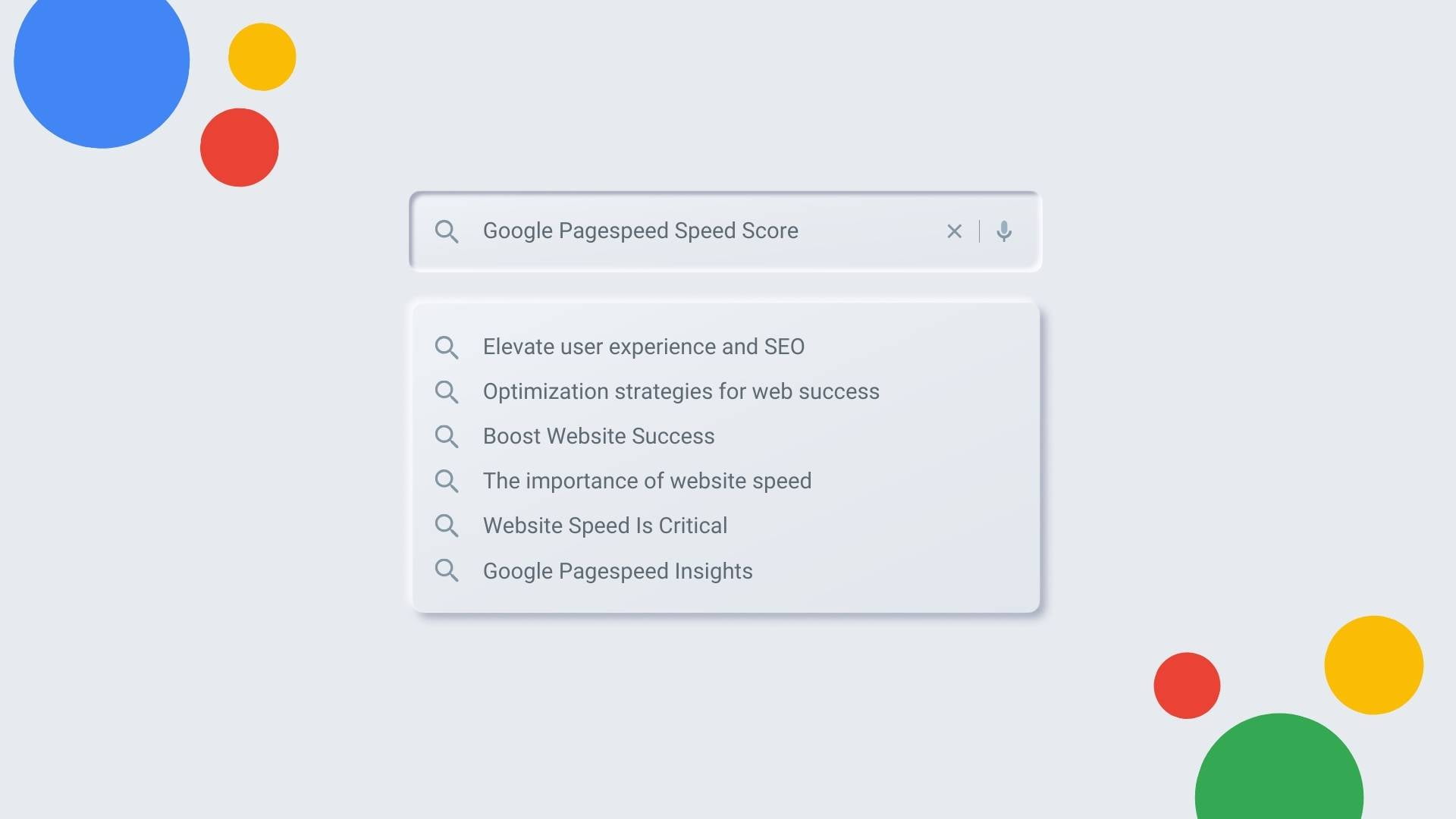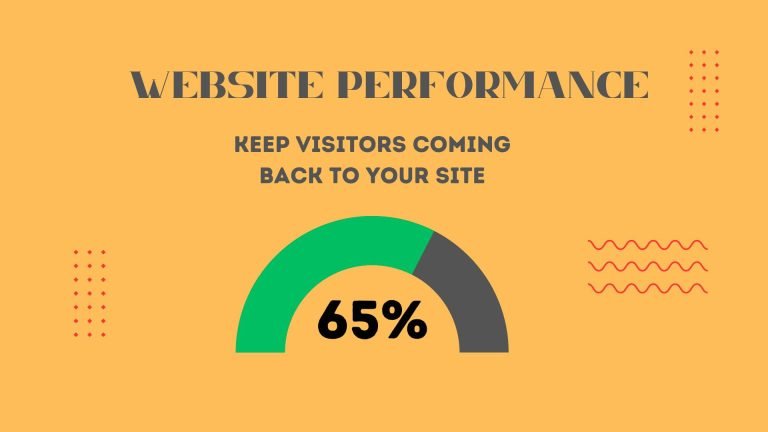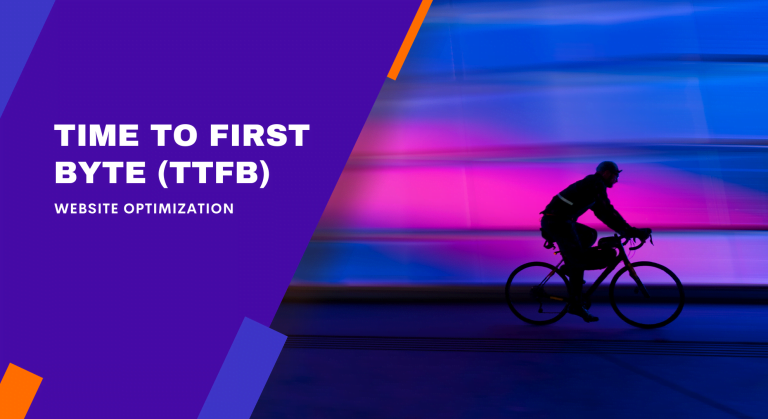The importance of website performance cannot be emphasized enough in today’s digital world, where speed is king. Users want fast access to information, and websites that take too long to load just do not cut it. Aside from customer happiness, website performance has a direct influence on search engine results, which affects your online exposure and commercial success. It’s not simply a matter of choice; in today’s fast-paced internet world, it’s an issue of relevancy. A quick, responsive website is more than an asset; it’s a competitive advantage that may catapult your online presence to new heights.
Google Pagespeed is an important tool in today’s digital world since it provides insights into website performance. It thoroughly assesses criteria such as website load speeds and mobile responsiveness, resulting in a Google Pagespeed Speed Score. This score is more than just a number; it represents a website’s ability to fulfill user expectations as well as search engine criteria. As we go further, you’ll see how important this tool is for user experiences, SEO rankings, and overall digital success. It’s more than simply a tool; it’s a compass that will guide you through your digital adventure.
Is Google Pagespeed the compass that guides website success?
Undoubtedly. Website speed is critical in today’s digital world. The Google Pagespeed Speed Score, a numerical indicator of website performance, has a substantial impact on user experiences and search engine rankings. Consider a potential consumer who encounters a slow, frustrating website; they’ll be gone in an instant. Furthermore, Google values speed in ranking. As a result, the primary question looms: Can you afford to disregard the Google Pagespeed Speed Score? No, it’s critical to developing a high-performing web presence.
Google PageSpeed Analysis
What precisely is Google Pagespeed Insights?
Google PageSpeed Insights is a great tool for evaluating and improving website performance. It acts as a critical compass for web developers, designers, and online businesses in a digital age when speed is king. This tool does a thorough examination of a website’s loading speed and general performance. Its major function is to provide practical information and recommendations to website owners, allowing them to optimize their sites for faster loading times and better user experiences.
How Does It Work?
Google PageSpeed Insights uses a complex approach to evaluate website performance. It investigates numerous crucial elements that contribute to a site’s speed, such as server response times, render-blocking resources, and image optimization. Pagespeed Insights then generates a Google Pagespeed Speed Score, which is a numerical assessment of the website’s performance.
The score is divided into two categories: mobile devices and desktops. Each score ranges from 0 to 100, with higher scores signifying better performance. Furthermore, the tool provides a full explanation of issues that affect website speed, categorizing them as “opportunities” or “diagnostics.”
SEO and User Experience
User experience and search engine optimization (SEO) are intrinsically tied to website speed and performance. A slow-loading website can be extremely unpleasant for users, leading to higher bounce rates and lower user satisfaction. In its ranking system, Google, the main search engine, focuses on user experience and site speed. Websites that load quickly tend to rank higher in search results, garnering more organic traffic.
In conclusion, Google PageSpeed Insights is critical for optimizing website performance. It enables website owners to improve user experiences, increase SEO ranks, and ultimately succeed in the digital arena by evaluating numerous speed-related issues and delivering actionable recommendations. It’s more than simply a tool; it’s a road map to digital success.
Understanding Google Pagespeed Speed Score
The Metric of Speed
The Speed Score indicator, a numerical measure of a website’s performance that holds substantial weight in the digital realm, is at the heart of Google Pagespeed Insights. But what exactly does this score represent, and how is it calculated? Let’s go into the specifics.
The Google Pagespeed Speed Score assesses the speed and overall performance of a website. It reflects how rapidly a webpage loads and how efficiently it operates. Scores vary from 0 to 100, with higher numbers indicating better performance. A higher score essentially suggests that a website is faster, better optimized, and provides a more seamless user experience.
Desktop vs. mobile
Google Pagespeed Insights doesn’t just provide you with one score; it gives you two: one for mobile devices and one for desktops. What is the significance of the distinction? The solution lies in the platforms’ varying demands and capabilities.
Mobile Speed Scores are concerned with how well a website works on smartphones and tablets. A good mobile Speed Score is critical for maintaining a positive user experience in an era where mobile surfing is prominent.
Desktop Speed Scores, on the other hand, assess the speed of a website on desktop computers. While desktops often have quicker internet connections and more processing capacity, a good desktop Speed Score is still important for attracting and retaining people who access your site using non-mobile devices.
Score Interpretation
Let’s decode the numbers now. When you acquire a Google Pagespeed Speed Score, you must grasp what it means.
Scores between 0 and 49 indicate poor performance with plenty of space for improvement. Websites in this price category typically have poor load times, which can lead to significant bounce rates.
Scores ranging from 50 to 89 indicate average performance. These websites are reasonably optimized, but there is still space for improvement.
Scores of 90 and higher indicate exceptional accomplishment. Websites in this price category often load quickly and provide a consistent user experience.
Consider the Speed Score to be a vital indicator of the health of your website. It reflects how well your site’s design, coding, and server response work. Furthermore, it lays out a clear path for future development. You can improve your website’s speed and user experience by identifying the issues that are driving a lower score.
Finally, the Google Pagespeed Speed Score is an important indicator in the digital world. Understanding its measurement, the differences between mobile and desktop, and how to interpret the score enables website owners to optimize their online presence and provide excellent user experiences across all devices.
The Value of User Experience
User Expectations
Users’ expectations have shifted in our fast-paced digital environment, and they expect websites to keep up. User expectations and satisfaction are directly affected by website speed. When a user clicks on a link, they expect near-instant access to the content they want. Slow-loading websites upset this expectation, leading to annoyance and impatience.
Consider visiting a website that takes an eternity to load. It’s a startling experience that may prevent users from investigating further. Fast-loading websites, on the other hand, are in line with modern user expectations, providing a smooth and delightful surfing experience. Users are more inclined to engage with and return to websites that cater to their need for speed.
Bounce Rates
One of the most telling implications of slow-loading websites is the direct association with high bounce rates. The percentage of visitors who leave a website after only reading one page is referred to as the bounce rate. When a website is slow, consumers are more likely to hit the return button and look for alternatives. This leads to an increased bounce rate, which can harm a website’s performance and search engine rankings.
A high bounce rate not only indicates customer unhappiness but also indicates to search engines like Google that the content or user experience on the site is inadequate. As a result, search engines may lower the website’s rating in search results, thus lowering its visibility to potential visitors.
Conversion Rates
Website performance has an impact on more than just user satisfaction and bounce rates; it also has an impact on conversion rates and income creation. The longer it takes for a webpage to load, the more likely people are to abandon it before converting—whether that means making a purchase, filling out a contact form, or subscribing to a newsletter.
Websites that load quickly, on the other hand, have a significant edge. They establish a unified user experience, allowing users to easily traverse product sites, complete transactions, and submit forms. This improved user experience leads to higher conversion rates and increased income for organizations.
Finally, website speed is more than just a technical consideration; it is a key component that directly affects user expectations, bounce rates, and conversion rates. Website owners and organizations must emphasize speed optimization as people continue to demand faster, more responsive online experiences to match these expectations and thrive in the digital arena. A quicker website not only retains users but also increases income and business success.
Implications of SEO
Rankings in Search Engines
The requirement for visibility on search engines is critical in today’s ever-competitive digital market. Google, being the search powerhouse that it is, uses a variety of characteristics to rank websites in its search results. Website speed is one such essential issue. Google recognizes that users want quick, efficient access to information, and it rewards websites that meet this requirement.
Because it has a direct impact on user experience, Google’s algorithms include website speed as a ranking criterion. When people search for information or products, Google strives to deliver the best results possible. Slow-loading websites can provide a negative user experience, forcing people to return to search results. Google detects this user behavior and, to provide excellent search results prefers faster-loading websites. This means that a speedy website not only keeps users engaged, but it also ranks higher in search engines.
Core Web Vitals
Google’s focus on improving user experience led to the creation of Core Web Vitals—a set of precise variables that assess the quality of a user’s experience on a webpage. Among these elements, speed is crucial. Core Web Vitals contain data such as Largest Contentful Paint (LCP), First Input Delay (FID), and Cumulative Layout Shift (CLS). These measures assess the loading performance, interactivity, and visual stability of a webpage, all of which are closely related to website speed.
Google has included Core Web Vitals in its ranking algorithm, demonstrating the critical necessity of speed in determining a website’s search exposure. Websites that succeed in these crucial speed-related indicators are more likely to get higher ranks, giving yet another incentive for website owners.
Mobile-First Indexing
The mobile revolution has altered the digital environment, with more consumers accessing websites via smartphones and tablets than ever before. In response, Google announced mobile-first indexing, a paradigm change that emphasizes the importance of mobile-friendliness and speed in search rankings. With mobile-first indexing, Google primarily considers the mobile version of a website for ranking and indexing, making a website’s mobile performance a significant element.
For website owners and businesses, this implies that mobile optimization and speed are non-negotiable. Websites that load rapidly on mobile devices are more likely to score highly in mobile search results, increasing their visibility to a larger audience.
In conclusion, website performance is not a luxury; it is a must for sustaining a good online presence. Google’s emphasis on user experience and the addition of speed measurements into ranking algorithms underline the importance of speed in a website’s search engine results. Website owners must understand that a speedier website not only pleases visitors but also gains favor with search engines, resulting in improved search visibility and higher organic traffic.
Real-World Case Studies and Examples
Success Stories
Real-world success stories graphically demonstrate the transforming potential of improving Google Pagespeed Speed Scores. These case studies highlight websites that started on a speed improvement path and garnered incredible returns.
Case Study 1: The E-Commerce Hunting Clothes
Consider an e-commerce website that experienced slow loading times, leading to significant bounce rates and abandoned shopping carts. In search of a remedy, the client invested in full-speed optimization services by WPRapidly. The results were astounding: a 45% reduction in page load times and a 30% boost in conversions. Users who were previously put off by delayed loading now had a pleasant shopping experience, resulting in a considerable increase in revenue.
Case Study 2: Mykonos Airport Transfer Services
Due to low Google rankings, a prominent website’s organic traffic decreased. The solution was speed optimization. We improved their Google Pagespeed Speed Score by 60% by resolving issues such as picture compression and code optimization. As a consequence, their search engine ranks soared, resulting in a 40% increase in organic traffic in a matter of months.
Transformations of Websites
The true strength of Google Pagespeed Speed Score improvement comes in its ability to turn websites from mediocre to digital powerhouses.
Example 1: Santorini Car Rental
Consider a website that is solely dedicated to providing services to travelers. Slow load speeds initially irritated users, forcing some to quit the site. The site became quick and efficient after using performance optimization techniques such as lazy loading and browser caching. Bounce rates fell dramatically, and consumers remained longer and engaged more deeply with the material.
A University striving to compete in the digital economy experienced difficulties as a result of its slow website. They transformed their website into a lightning-fast, user-friendly platform by adopting speed optimization, which included decreasing server response times and optimizing pictures.
These success stories and website changes demonstrate the irrefutable value of optimizing Google Pagespeed Speed Score. It’s about improving user experience, increasing search engine ranks, and producing meaningful business development. These examples demonstrate that investing in speed is an investment in the future success of your website.
Factors Influencing Google Pagespeed Speed Score
Optimization Techniques
Improving your Google Pagespeed Speed Score entails a combination of technical wizardry and user-centered improvements. Here are some tips to help you improve your score:
- Image optimization entails compressing and resizing photos without sacrificing quality. Using contemporary picture formats such as WebP can help to cut load times even more.
- Browser Caching: Use browser caching to save static files locally so that returning visitors don’t have to download them again each time they come.
- Minification: Remove unneeded gaps and reduce file sizes by minifying CSS, JavaScript, and HTML files.
- CDNs: Use CDNs to spread your content over various servers across the world, providing better loading times for users in different countries.
- Server Response Time: Improve the performance of your server by upgrading hosting plans, activating server-level caching, and decreasing unnecessary server queries.
- Lazy Loading: Use lazy loading to load pictures and videos only when they enter the user’s viewport.
- Render-Blocking Resources: Identify and remove or postpone render-blocking resources that cause the initial page rendering to be delayed.
Typical Pitfalls
While speed optimization can be extremely beneficial, the following frequent errors might stymie your progress:
- Focusing entirely on desktop speed might be a mistake. As Google considers mobile-friendliness in rankings, ensure that your website is as speedy and responsive on mobile devices.
- Ignoring User Experience: It’s not just about statistics when it comes to speed. Reduce annoying pop-ups, improve navigation, and make sure material is easily accessible.
- Excessive use of third-party scripts, such as social media widgets and ad trackers, might cause your site to load slowly. Consider asynchronous loading and prioritizing key scripts.
Dependencies on Third Parties
External variables can have an impact on your Google Pagespeed Speed Score. Here are some things to think about:
- Hosting Services: The speed of your website is greatly influenced by your hosting provider. Choose a renowned host with a solid infrastructure and fast server response times.
- CMS (Content Management Systems): The CMS you employ might influence your score. Some CMSs are more tuned for speed out of the box than others.
- Plugins and Themes: Be cautious when choosing plugins and themes, since badly developed or resource-intensive ones might degrade the speed of your site.
- Keep a lookout for third-party resources such as fonts and scripts. When feasible, use asynchronous loading to avoid stalling page rendering.
- User Location: The physical location of a user might affect load speeds, especially if your website is hosted on a single server. CDNs can assist in alleviating this problem.
To summarize, maximizing your Google Pagespeed Speed Score entails a combination of technical fine-tuning, user-centric enhancements, and being aware of other dependencies. By avoiding typical errors and taking into account third-party elements, you may pave a path to a faster, more user-friendly website that performs highly in search results.
Tools and Resources for Improvement
Recommendations from Google
As the arbitrator of search engine rankings, Google provides useful tips for optimizing website speed:
- PageSpeed Insights: Begin with Google’s own PageSpeed Insights tool. It does a complete study of your website’s performance and makes recommendations for changes.
- Mobile-Friendly Design: Make certain that your website is mobile-friendly. In its ranks, Google promotes mobile optimization.
- Pictures that have been compressed and optimized: Compress and optimize pictures to reduce load times without sacrificing quality.
- Browser Caching: Use browser caching to locally save static resources and decrease server requests.
- Minify CSS, JavaScript, and HTML to remove extraneous characters and shrink file sizes.
- Implement a Content Delivery Network (CDN) to distribute content across several servers, lowering latency for users all around the world.
Third-Party Tools and Services
Several tools and websites can help in diagnosing and fixing speed issues:
- GTmetrix: Provides extensive reports on website performance, as well as ideas for improvement.
- Pingdom: Provides insights into your website’s load speed and suggests opportunities for optimization.
- WebPagetest: This tool allows you to test the speed of your website from various locations and devices.
- Google Analytics: Analyzes website speed and user experience, providing insights on performance issues.
- WPRapidly Speed Optimization Services: WPRapidly is a prominent service provider specializing in WordPress speed optimization. Their expertise includes in-depth analysis, customized solutions, and constant monitoring.
Professional Help vs. Do-It-Yourself
The decision of whether to tackle speed optimization in-house or hire a professional depends on aspects such as your technical ability and the complexity of your website.
- DIY optimization can be beneficial if you are tech-savvy and your website’s speed issues are small. It’s inexpensive and gives you control over the process.
- Professional Assistance: When your website is experiencing significant speed issues, lacks technical experience, or simply wants a hands-off approach, enlisting the help of specialists like WPRApidly can be a game changer. They provide customized methods, ongoing monitoring, and the assurance of a website that is optimized for speed and adheres to Google’s best practices.
To summarize, website performance optimization is critical for both user experience and search engine rankings. When combined with the correct tools and resources, Google’s recommendations can help you achieve major improvements. Whether you pursue the DIY route or hire a professional like WPRapidly, the goal is the same: a faster, more user-friendly website that stands out in the digital world.
Dispelling Myths and Misconceptions
Myth #1: Google Pagespeed is the only ranking factor
One of the most common misconceptions about the Google Pagespeed Speed Score is that it is the only factor that determines your website’s search engine ranking. While speed is important, Google’s ranking algorithm takes into account a variety of other factors, including content relevancy, backlinks, and user intent. So, even if your website’s speed score isn’t flawless, it doesn’t imply it’s doomed in search results.+
Myth #2: A perfect score ensures a positive user experience
Another common myth is that obtaining a flawless Google Pagespeed Speed Score assures an excellent customer experience. While a high score indicates a website that loads quickly, it does not necessarily reflect the overall quality of your content, design, or functioning. Poor navigation or irrelevant information will not be compensated for by a lightning-fast website. It’s critical to establish a balance between speed and usability.
Setting Reasonable Expectations
In actuality, the Google Pagespeed Speed Score is a useful tool for assessing and optimizing website performance. It can greatly improve user experience, lower bounce rates, and increase conversions, but it cannot do miracles on its own. Setting realistic expectations is critical: improving speed is just one component of a larger online success strategy.
Focus on developing great content, upgrading site layout, and providing a seamless user experience to reap the most benefits from a high Google Pagespeed Speed Score. Keep in mind that website optimization is a continuous process in which little incremental improvements can lead to large results over time. By debunking these beliefs and knowing the true relevance of the score, you’ll be better positioned to improve your website’s performance and provide users with a better experience.
Website Speed in the Future
Emerging Website Speed Optimization Trends
Website speed optimization is always adjusting to meet new challenges and opportunities as the digital ecosystem advances. Some new developments in this field are altering how websites improve their performance:
- Integration of Google Core Web Vitals: Google’s Core Web Vitals, which focus on loading performance, interactivity, and visual stability, are becoming increasingly important for ranking. Websites that use these data in their SEO methods will almost certainly experience an increase in search visibility.
- Mobile-Centric Optimization: As mobile devices become more prevalent, speed optimization is changing toward a mobile-centric strategy. It is increasingly critical to ensure that your website loads quickly and performs smoothly on mobile platforms.
- Progressive Web Apps (PWAs): PWAs are gaining popularity due to their near-instant loading and offline capability. Investing in PWAs may transform the user experience and speed.
Google’s Evolving Speed Criteria
Google’s criteria for measuring website speed have developed and will most likely continue to evolve. As search engine algorithms become more advanced, speed measures may become even more complicated. While the Google Pagespeed Speed Score remains important, it is critical to stay up to date on any changes in Google’s criteria to ensure continuing optimization success.
Adaptive Speed Optimization Techniques
In light of these changing trends and requirements, web design firms and freelancers should implement adaptive speed optimization tactics. This entails being adaptable and ready to change your strategy as the digital landscape evolves. Regularly checking website speed, staying informed about market advancements, and actively searching out new optimization tools and approaches can keep your websites competitive in terms of performance and usability.
Finally, for those ready to adapt and develop, the future of website performance optimization promises tremendous potential. Web design businesses and freelancers may keep their edge in providing faster, more user-friendly websites by incorporating current trends, staying tuned in to Google’s shifting criteria, and embracing adaptable techniques. This dedication to speed will continue to be critical to online success.
Unlocking the Power of Google Pagespeed Speed Score: Key Takeaways
The speed with which your website loads may make or break your online success in today’s digital era. We’ve discussed the significance of website speed, dug into the world of Google Pagespeed Insights, and investigated how this statistic affects user experience and SEO. The following are the important takeaways:
- Website Speed Is Critical: The speed of a website has a substantial impact on user happiness, bounce rates, conversion rates, and search engine results. A slow-loading website can lose you visitors and cash in today’s fast-paced internet environment.
- Google Pagespeed Speed Score Is Important: Google Pagespeed information provides vital information about the performance of your website on mobile and desktop. The performance Score is a measurable indicator of your site’s performance and usability.
- While a high-speed Score is ideal, it is not the only criterion for success. User experience, quality content, and mobile friendliness are all important factors in website performance and SEO.
So, Is It Critical?
The fundamental question we raised was, “Is Google Pagespeed Speed Score truly critical for website success?” The answer is a loud yes. It’s a vital aspect in the ever-changing digital world. It is, however, part of a larger plan for achieving online excellence. ML-powered speed enhancements for websites.
Improving Your Chances of Success
Now that you understand the importance of website speed and the role of the Google Pagespeed Speed Score, it’s time to take action. Improve the speed, user experience, and SEO of your website. Use Google Pagespeed Insights as a valuable tool, invest in optimization strategies, and stay current with industry trends. Prioritizing speed not only improves website performance but also sets the stage for long-term digital success.






